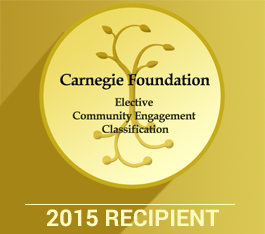Learning about populations
Overview
Population health, or community health, focuses on populations or communities broadly construed to include groups defined by geography, demography, occupation, health problems, health risk or health care need.
This toolkit will help introduce you to community health approaches to analyzing health problems or risks of a population, as well as strategies and programs aimed at improving its health. Because the problems of many of these groups exist in the context of societal conditions of disadvantage, a community health approach that provides accessible services tailored to a group's unique needs, is more likely to be effective, especially if accompanied by a public health approach that emphasizes prevention, largely through educational and legislative means.
Key Indicators
2013 Greater Worcester Community Health Improvement Plan
Healthy People 2020: Link to the summary report of the Institute of Medicine, identifying their priorities from the larger program
Healthy People 2010
Regional Health Status Indicators Report 2007
Common Pathways Indicator Report 2008
Healthy People 2010 Leading Health Indicators for Massachusetts presents the latest data on the 10 Leading Health Indicators for Massachusetts –physical activity,overweight and obesity, tobacco use, substance abuse, responsible sexual behavior, mental health, injury and violence, environmental quality, immunization and access to health care.
Regional Health Status Indicators ReportThis comprehensive report from 2007 provides data by region on sociodemographics, health care access, birth, leading cause of death, chronic disease outcomes and overweight/obesity, cancer, substance abuse, injury, violence and occupational health, HIV/AIDS, infectious disease, asthma, lead poisoning, oral health, refugees, premature mortality. |
||
Common Pathways Indicator ReportIdentifies indicators in six theme areas: |
||
Economic DevelopmentThe area of economic development represents factors such as employment opportunities, access to shopping, a vibrant downtown, a business friendly environment, the absence of abandoned commercial and residential buildings, and a strong commercial tax base. |
The economic development indicators selected are: 1. Unemployment rate and net job growth 2. Poverty measure- % of population below the federal poverty level 3. Number of vacant residential and commercial buildings 4. Changes in commercial/ residential tax base and total tax base |
|
EducationThe area of education includes preschool, K-12, post-secondary education, lifelong learning, andEnglish as a Second Language. |
The education indicators selected are: 1. Percentage of 4th and 10th graders who are proficient in English Language Arts based on the Massachusetts Comprehensive Assessment System (MCAS) 2. Percentage of 4th and 10th graders who are proficient in Math based on the Massachusetts Comprehensive Assessment System (MCAS) 3. Four-year graduation rates 4. Four-year graduation rates by race and ethnicity 5. Percent of public high school graduates pursuing post-secondary education 6. Number of people waiting to enroll in English as a Second Language Program 7. Percent of early childhood education students who receive services from accredited agencies and staff |
|
HousingThe area of housing includes affordability, safety and availability of housing. |
The housing indicators selected are: 1. Percent of owner occupied units compared to percent of renter occupied units 2. Percent of households paying greater than 30 percent of income on housing 3. Number of individuals and families who are homeless |
|
Public Health and Medical ServicesThe area of Public Health and Medical Services includes the availability of and access to medical facilities, the quality of services, and health-insurance coverage. |
The indicators selected for this area are: 1. Infant mortality rates 2. Percent of third grade students with at least one untreated dental cavity, Worcester County 3. Tobacco use among youth and adults 4. Percentage of adults who are overweight or obese by race and ethnicity 5. Rate of deaths caused by HIV/AIDS in Worcester compared to the state by race and ethnicity 6. Sexually transmitted infections among youth |
|
Social and Mental Health ServicesThis area includes the availability of and access to mental health services and social services. |
The indicators selected for this area are: 1. Number of evaluations and hospitalizations at UMASS Psychiatric Emergency Room 2. Number of emergency department visits for self inflicted injuries by age 3. Mental health symptoms among Latinos/Hispanics 4. Primary substance of use 5. Admissions to all substance abuse treatment services by race and ethnicity 6. Number of individuals and families served by hunger agencies in Worcester 7. Worcester Public Schools free or reduced lunch 8. Low Income Heating Assistance Program household totals |
|
TransportationThe area of transportation includes access to and effectiveness of public and private transportation (air, bus, car, commuter rail) and the impact transportation options have on employment opportunities, economic development, and access to health care. |
The indicators selected for this area are: 1. Number of rides provided by Worcester Regional Transit Authority buses 2. Number of bus routes serving Worcester 3. Commuter train ridership from Worcester to Boston 4. Number of bus trips provided by private service (Peter Pan Bus Lines) to Boston 5. Means of transportation to work 6. Total commuting time rate among regional competitive cities 7. Commercial aviation service 8. Number of taxi medallions |
|

